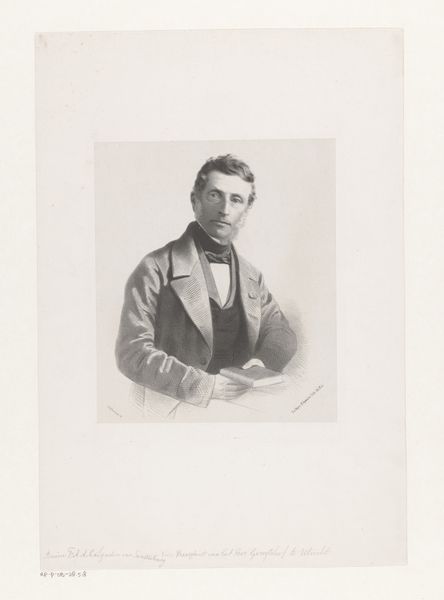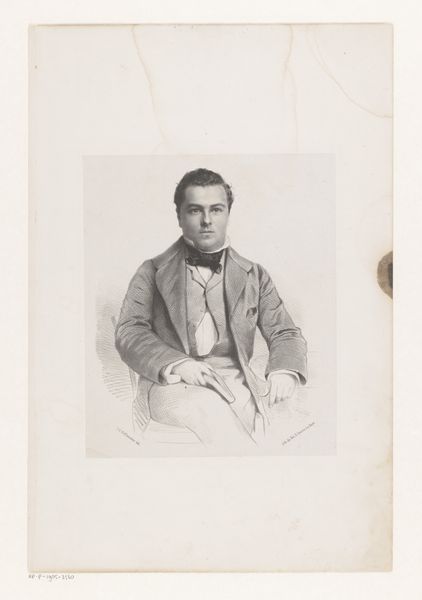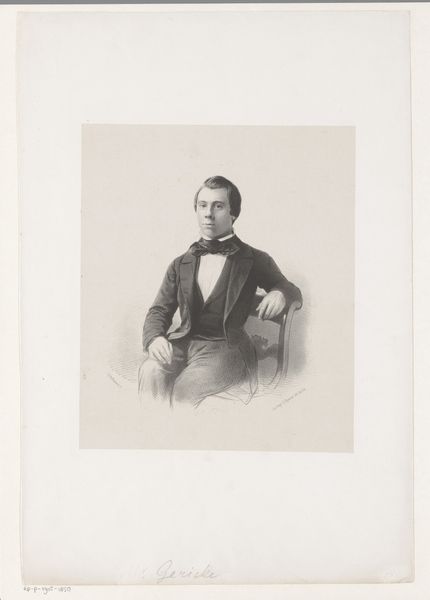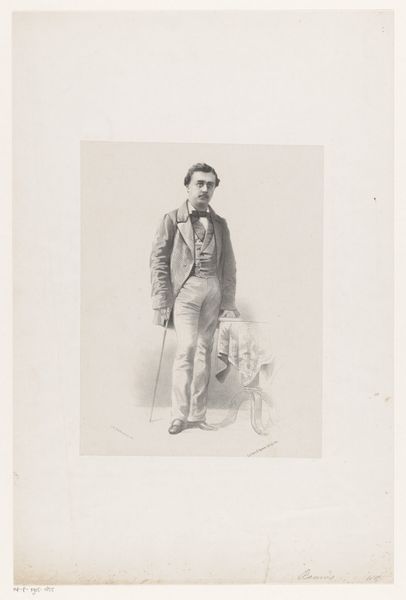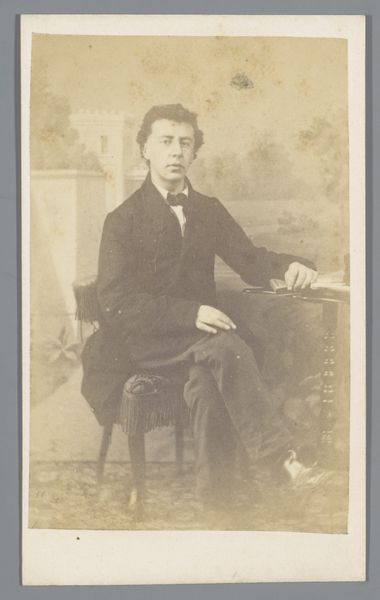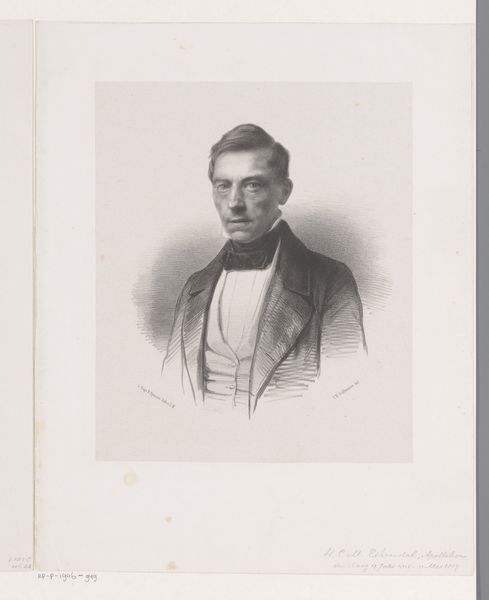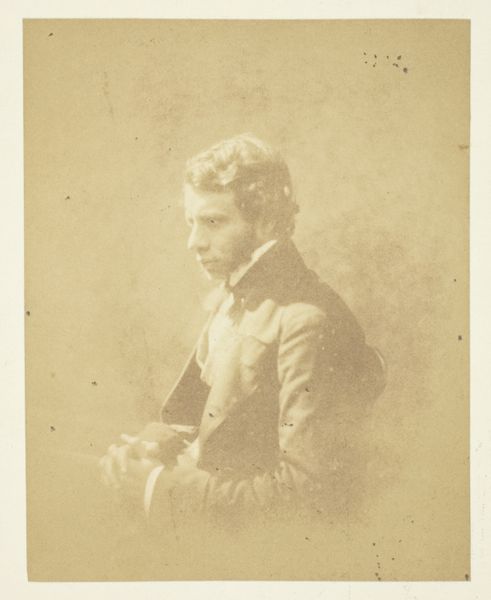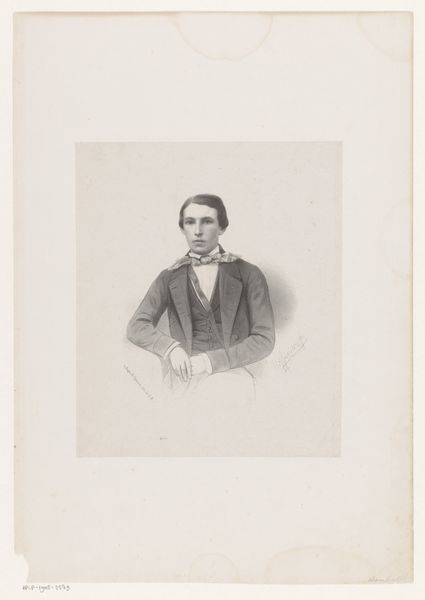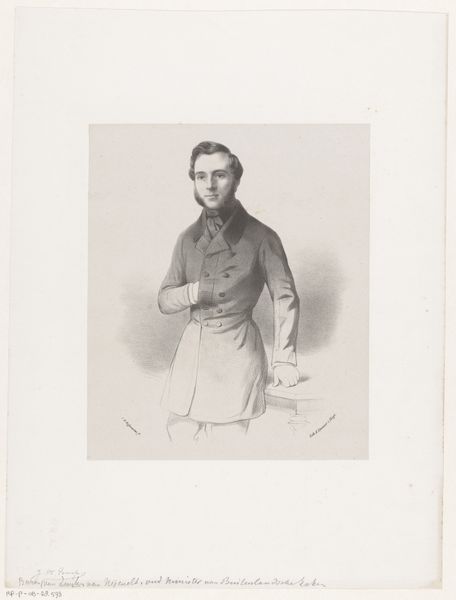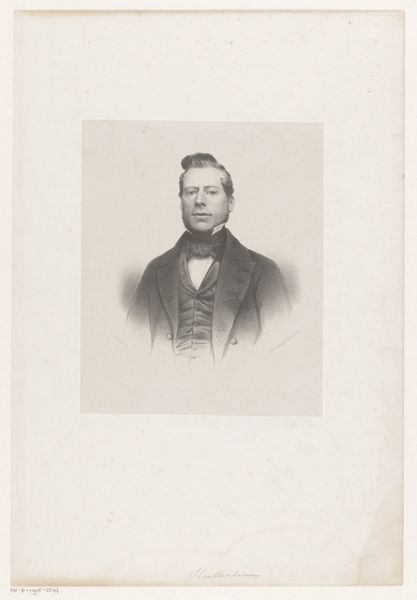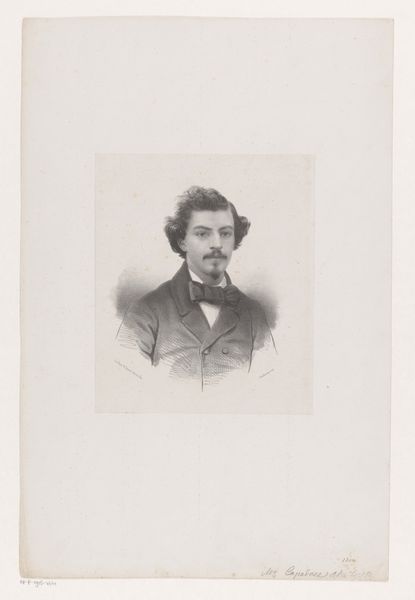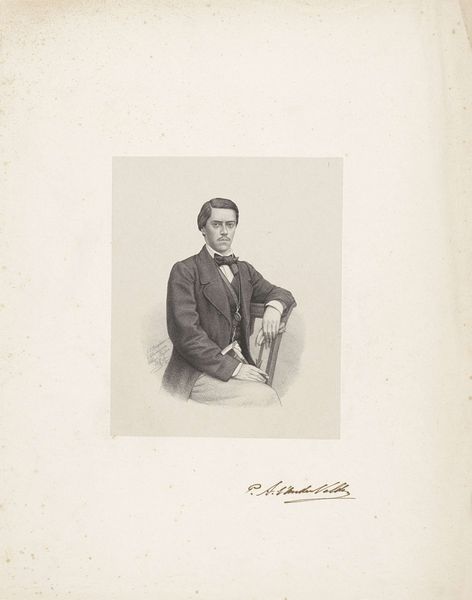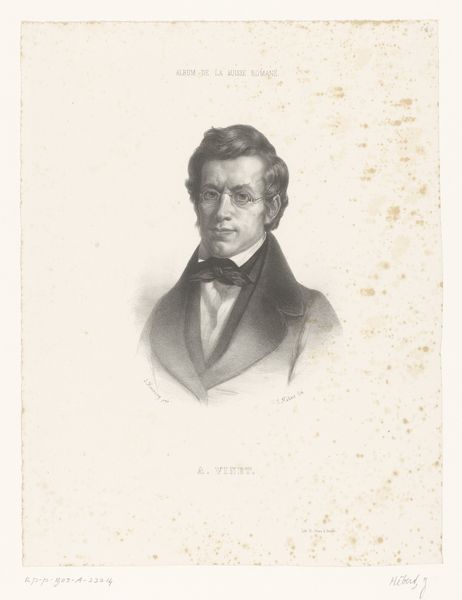
#
pencil drawn
#
light pencil work
#
expressing emotion
#
pencil sketch
#
portrait reference
#
pencil drawing
#
limited contrast and shading
#
portrait drawing
#
pencil work
#
remaining negative space
Dimensions: height 425 mm, width 290 mm
Copyright: Rijks Museum: Open Domain
Curator: Looking at this light pencil work, I find myself wondering about the sitters. Editor: Ah, this drawing offers us a peek into the world of Willem Maurits de Brauw, rendered by Johan Hendrik Hoffmeister. The dating is somewhat vague, around 1851 to 1883, suggesting a potentially extended period of artistic engagement or perhaps a posthumous depiction. Curator: The vagueness in dating actually deepens the mystery and gives it a sort of universal quality, beyond a fixed historical point. The symbolism of portraits during that time is rich. What do you read in his gaze? Editor: He seems caught between confidence and a certain vulnerability. The sketch focuses our attention squarely on him. As for the public role of portraiture then, we must recall its ties to social status. Here, the negative space almost elevates de Brauw above the everyday, yet the medium, pencil, lends a kind of accessibility. Curator: True, it lacks the ostentation often associated with painted portraits of the wealthy. The delicate shading gives it an almost dreamlike quality, but there’s also that carefully constructed attire – the cravat, waistcoat, jacket. It projects a carefully considered persona, but in a relatively humble and psychologically vulnerable way. Editor: The limitations in contrast direct our focus. We are given enough detail to interpret his socio-economic standing but our mind is more free to explore the subject’s psychological depth. Hoffmeister created this work during a period of great change in Dutch society. This portrait may reflect anxieties of evolving notions of the masculine ideal. Curator: I'm fascinated by how much this light sketch conveys about identity, class, and the enduring power of the gaze through simple, stark lines. The artist really made careful decisions. Editor: Indeed. It highlights how even seemingly straightforward images participate in larger cultural conversations of their time and beyond. The artist invites each one of us to play our part as interpreters.
Comments
No comments
Be the first to comment and join the conversation on the ultimate creative platform.
